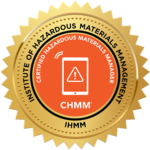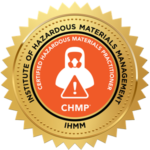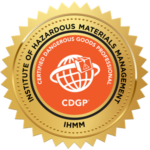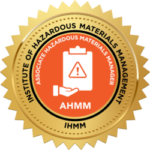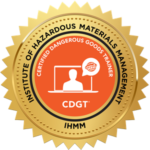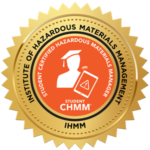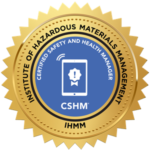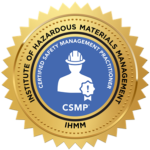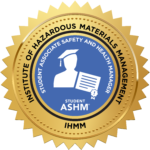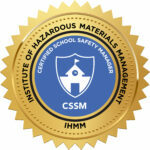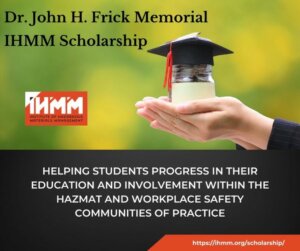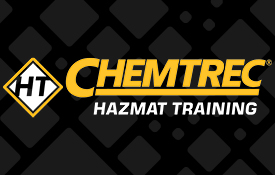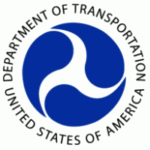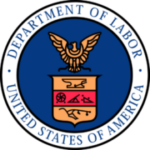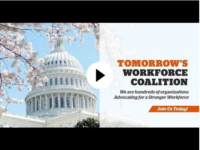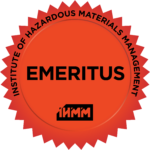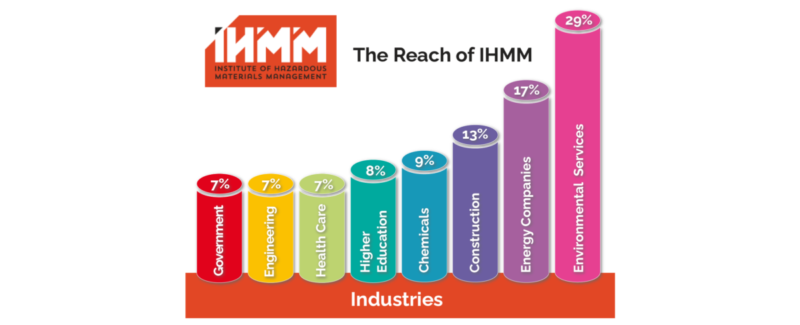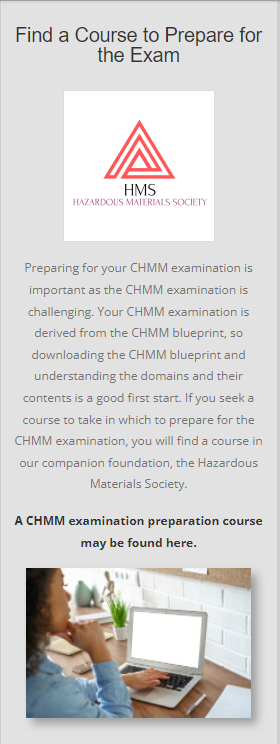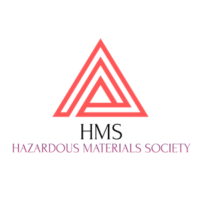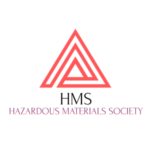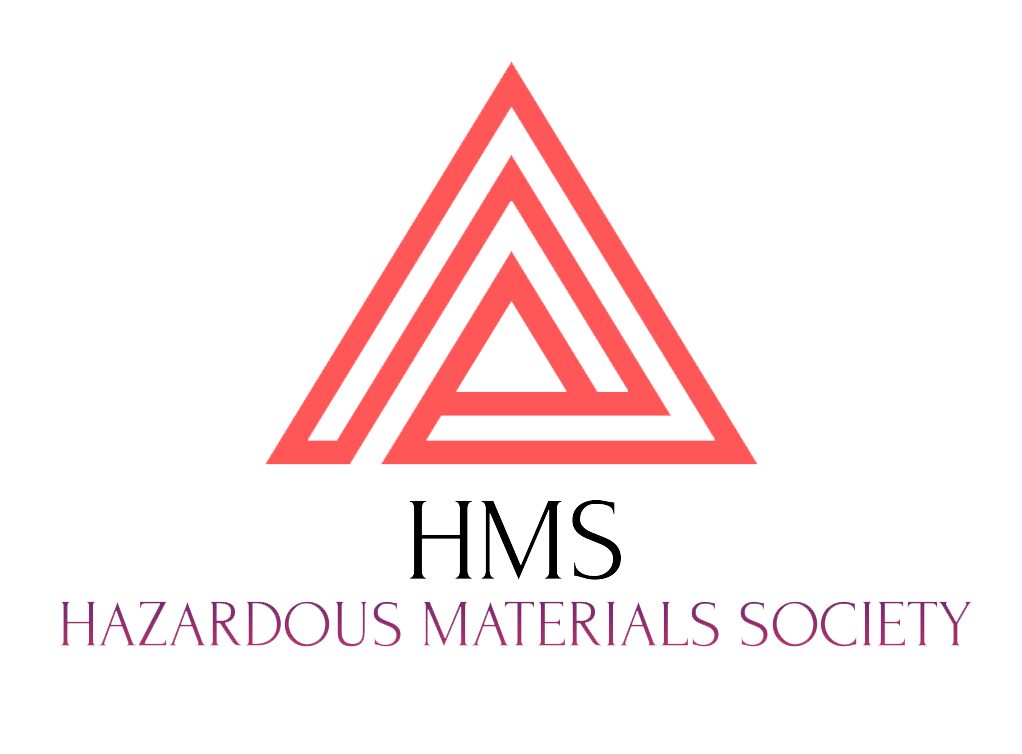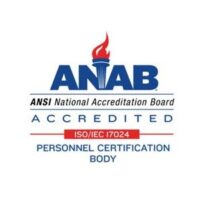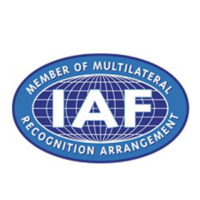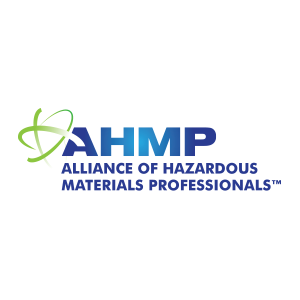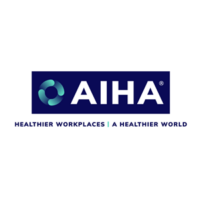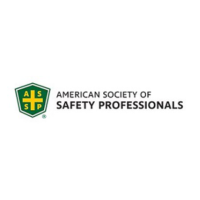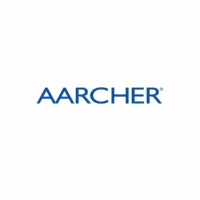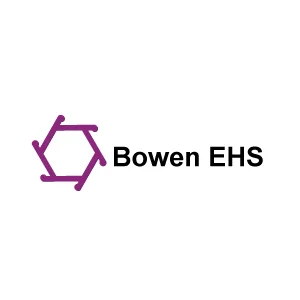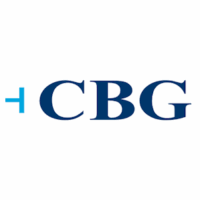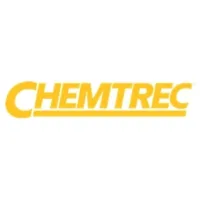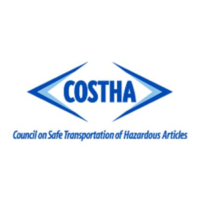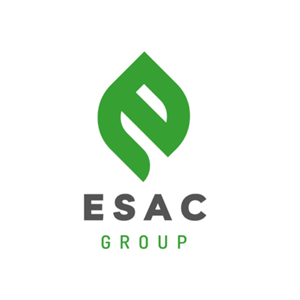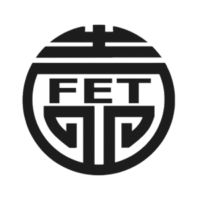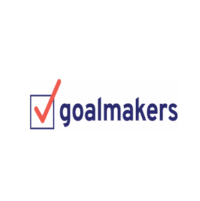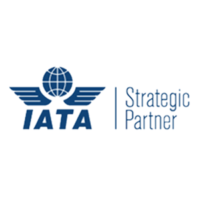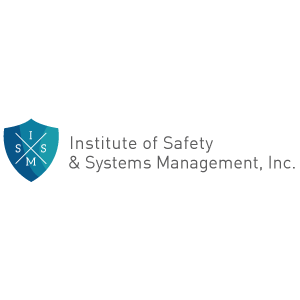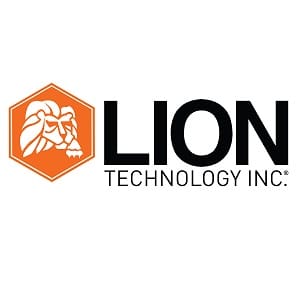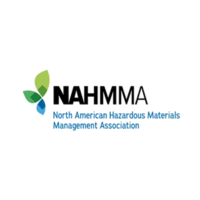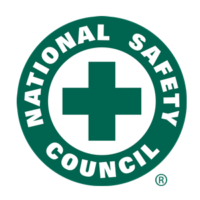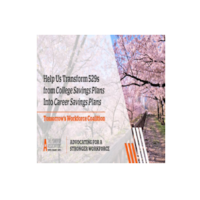IHMM Today is an online publication of the Institute of Hazardous Materials Management® (IHMM®).
Other than content specifically provided by IHMM, articles contained in IHMM Today are compiled from
independent sources and do not necessarily reflect the opinions of IHMM.

Merry Christmas, Happy Hanukkah, and Happy Holidays
From everyone at IHMM, we wish all of you a Merry Christmas, Happy Hannukah, Happy Holidays, and a Happy New Year.
IHMM Today will not be published on December 24, 2024, as we enjoy our families on Christmas Eve. See you all in the New Year!
Home | IHMM Credentials | Certificants | About IHMM | Event Calendar | Archive | Advertise with IHMM
The Value of IHMM Credentials
Below you will see the credential badges that are now in each CHMM, CHMP, CDGT, CDGP, AHMM, Student CHMM, CSHM, CSMP, CSSM, ASHM and Student ASHM certificant’s MYIHMM account. Every IHMM certificant may use these badges, linked as those below are to their IHMM credential page, for their email signatures, business cards, and other social media applications. You’re justifiably proud of the accomplishment of having earned your credential and you can show the rest of the world. Simply right-click on the badge of choice, save it to your computer, and then load it to wherever you want to use it, and please link that back to https://ihmm.org/.
Hazardous Materials / Dangerous Goods Transportation Credentials
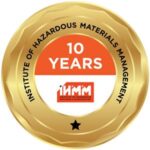
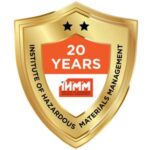
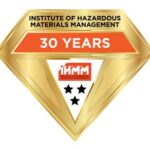
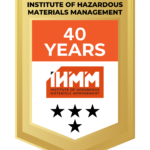
IHMM Certificant Recognition
Throughout our certificant’s MYIHMM accounts are placed 10-year, 20-year, 30-year, and 40-year badges signifying their longevity as an IHMM certified professional.
With a link from your credential badge to the IHMM website [see above] you can not only stand out as an IHMM-certified professional, you can also promote IHMM credentials to others. Right-click on the badge of choice, save as to your computer, then load it to whatever medium you choose.
IHMM has Distinguished Diplomates and Fellows of the Institute badges to the appropriate people in the MYIHMM database. These two badges are accompanied by lapel pins sent to each of those distinguished by holding these designations.
Follow IHMM on Social Media
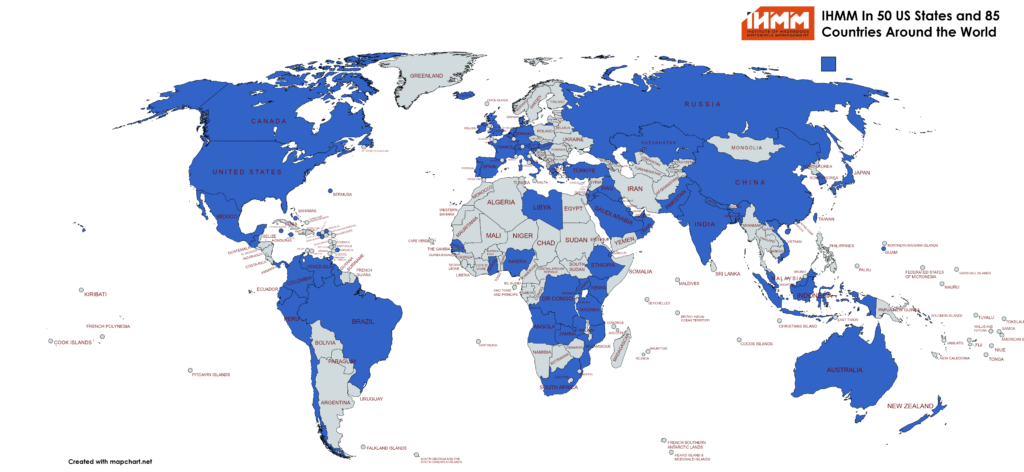
IHMM is in all 50 of the United States and in 85 countries around the World.
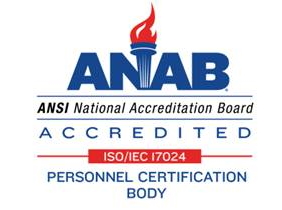
IHMM Credentials Accredited By

NEED HELP?

Need Help? On the IHMM website just click on the “NEED HELP?” button
and let us know what you need and the right person will get right back with you.
Need Help? On the IHMM website just click on the “NEED HELP?” button
and let us know what you need and the right person will get right back with you.
IHMM RECENT NEWS
HAZARDOUS MATERIALS/DANGEROUS GOODS
EPA Fall 2024 Regulatory Agenda
DOT Fall 2024 Regulatory Agenda
NWRA commentary: Waste and recycling efforts clear the path to recovery in postdisaster communities
CAA submits final draft program plan in Oregon
Levels of cancer-causing benzene reached new heights in beleaguered Channelview, Texas. Regulators never told residents.
Researchers Reveal Key Factors Behind Japan’s Plastic Waste Removal Rates in Rivers
Recycling Human, Animal Excreta Reduces Need for Fertilizers
Guidance on the Preparation of State Implementation Plan Provisions That Address the Nonattainment Area Contingency Measure Requirements for Ozone and Particulate Matter
Reconsideration of the Dust-Lead Hazard Standards and Dust-Lead Post-Abatement Clearance Levels; Correction
Certain Existing Chemicals; Request To Submit Unpublished Health and Safety Data Under the Toxic Substances Control Act (TSCA)
Agency Information Collection Activities; Proposed Information Collection Request; Comment Request; The 8th Drinking Water Infrastructure Needs Survey and Assessment
National Pollutant Discharge Elimination System (NPDES) 2026 Issuance of the Multi-Sector General Permit for Stormwater Discharges Associated With Industrial Activity
EPA Launches New Studies and Data Collection Efforts to Better Protect Communities from PFAS
Clock starts for EU ESG Ratings Regulation
EPA is Out With a New Rule About the Delegation of “Dredge and Fill” Permitting Authority. Will Any States Care?
EPA’s PFAS Dragnet: What Companies Need to Know About PFAS Reporting Under TSCA Section 8(a)(7)
EPA Begins Public Consultation on Interim Framework for Advancing Consideration of Cumulative Impacts
EPA Enacts Bans on Two Common Chemical Solvents
Nuclear Waste Cleanup: NNSA Should Improve Its Strategy for Managing Anticipated Waste from Defense Activities
Revised Regulation on Classification, Labelling and Packaging of Chemicals enters into force
OPCW and Republic of Korea promote chemical safety and security in Asia
CVSA inspection blitz sidelines trucks and buses for hazmat violations
EHS/WORKPLACE SAFETY
Just Published: Revised Hazardous Energy Standard
OSHA Elevates Importance of Proper PPE Fit in Construction
Safety is in the Foundation: A10.1 Reinforces Pre-Task Planning in Construction
Looking Back & Moving Forward: Workplace Safety in 2024 & Beyond
Trump tariffs could disrupt construction projects
Why are workers reluctant to embrace Type 2 head protection?
Feds release $850M to fix aging water infrastructure in the West
Panic begins when knowledge end
Justices could scale back environmental law in NEPA case
SCOTUS weighs fraud claim involving racial preferences
OSHA’s Top 10
Think ‘fit’ – not ‘fix’ – when designing work for safety
National Safety Council Commits $300,000 in Grants to Solve Most Common Workplace Injury
Backlog holds steady as contractors eye private construction rebound
November 2024 economic roundup
Workers’ Comp Math Made Easy: Measuring the Effectiveness of Your Workers’ Comp Program
OSHA’s Safe + Sound Relies on Worker Participation
NLRB Returns to Union-Friendly “Clear and Unmistakable Waiver” Standard
Catching Up on 401(k) Catch-Up Changes for 2025
2025 Employment Law Updates for Connecticut, Massachusetts, and Rhode Island
Arkansas advocacy group suggests policies to curb child labor violations
MCPS creates new school safety updates
Suicide Prevention, Violence Prevention, Social Inclusion and School Safety Requirements
OSHA Updates PPE Rules for Construction Workers
ANSI/ASSP standards participants are involved in Prevention Through Design
Maine adopts final rule on paid family and medical leave
DOL Seeks Nominations for OSHA’s Advisory Committee on Construction Safety and Health
Preventing Hearing Loss in Construction: NIOSH Study Identifies High-Risk Noise-Exposed Workers
Inside IHMM
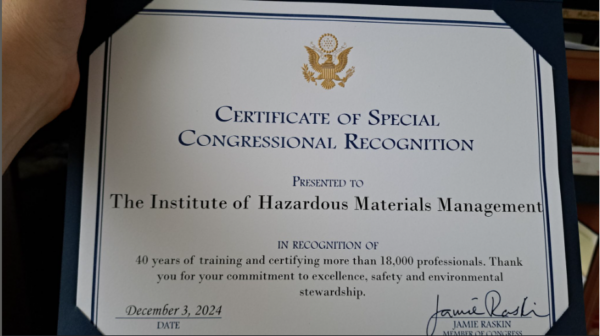
United States Congress Recognizes IHMM
IHMM is pleased to announce that thanks to Maryland 8th District Congressman Jamie Raskin, the Congress of the United States has recognized IHMM on the occasion of its 40th anniversary.
We thank Congressman Raskin for leading this effort, and for recognizing the outstanding certified professionals of IHMM.

400,000 Per Month
400,000 is the number of messages sent from IHMM each month to thousands of private and public sector entities to raise the visibility of IHMM, IHMM credentials, and IHMM credential holders.
Whether for Kimberlie Long Holt in California who just earned her ASHM credential, Sophia Garcia who both just passed her CHMM exam, or Tiffany Butler, ST/CHMM who is our recent Certificant Spotlight, or Ashley Howard of Embry Riddle who just passed her Student ASHM exam and the thousands in between in 50 states and 85 countries, we believe in promoting IHMM’s certificants and their achievements.
One day at a time, IHMM’s mission includes building understanding in 50 states and 85 countries around the world of the critically important role IHMM’s credentials and our credential holders play as IHMM sets standards of excellence for professional credentials to advance the global environmental, health, and safety communities of practice.
400,000 Per Month
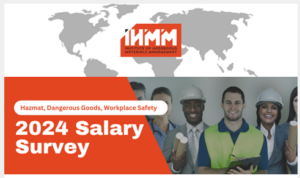
IHMM Releases 2024 Salary Survey Results
IHMM is pleased to release the 2024 survey of salaries underlying the hazardous materials/dangerous goods credentials salaries by job totle, as well as the 2024 survey of salaries underlying the workplace safety credentials salaries by job title. You may download these surveys as linked below.
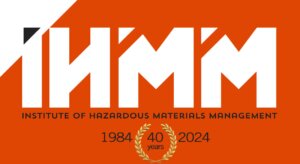
IHMM Enters Its 40th Year
On December 3, 1984 the Institute of Hazardous Materials Management was created with the Certified Hazardous Materials Manager® [CHMM®] credential. John H. Frick, Harold M. Gordon, John J. McCambridge, and Richard A. Young created what would become an Institute that offers 11 professional credentials across Hazardous Materials/Dangerous Goods and EHS Work Place Safety communities of practice in all 50 of the United States and 85 other countries.
IHMM thanks its hundreds of volunteer leaders, thousands of certificants and companies who support IHMM through strengthening its ability to extend its reach and allow us all to live up to why we exist our vision, and our mission…
Why We Exist
We believe there is only one Earth; our passion is to protect it.
Our Vision
IHMM credentials and competency standards are embraced worldwide
Our Mission
IHMM sets standards of excellence for professional credentials to advance the global environmental, health, and safety communities of practice.
IHMM Elects Officers for 2025
IHMM would not be where it is today without the energy, vision, and commitment of its hundreds of volunteer leaders. Congratulations to the new 2025 IHMM Executive Committee, with Melissa Hamer, CHMM as Chair, June Brock-Carroll, CHMP as Vice Chair, Jan Rosenberg, CSHM as Treasurer, and Morgan Hyson as Secretary.

Melissa A. Hamer, Esq. CHMM
Chair
Ms. Hamer is an attorney practicing environmental law in Indiana. She was elected as a Director in 2019. 2nd term expires 12/31/2027

June Brock-Carroll, CHMP
Vice Chair
Mrs. Brock-Carroll is the Research Safety Hazardous Materials Manager at Clemson University in South Carolina. She was elected as a Director in 2017. Second term expires 12/31/2025.

Jan G. Rosenberg, CSHM
Treasurer
Mr. Rosenberg is a consultant and former Deputy Administrator of the State of Nevada’s Division of Industrial Relations with a focus on OSHA enforcement and compliance. He came on the Board in 2019. Second term expires 12/31/2026.

W. Morgan Hyson.
Secretary
Morgan is the Public Member of the Board who was re-elected in 2024 for a 4-year term that ends 12/31/2028. Morgan is a former staff member at IHMM who now works at the State Department.
The Dr. John H Frick Memorial IHMM Scholarship Program – CLOSED FOR 2024
The Institute of Hazardous Materials Management is pleased to have created $32,000 in academic scholarships, divided equally between $16,000 for students enrolled in undergraduate or graduate education in approved schools and who are also Student CHMMs, and $16,000 for students enrolled in undergraduate or graduate education in approved schools and who are also Student ASHMs.
IHMM seeks to foster the growth and academic success of students whose courses of education, and participation in one of our Student certifications, will lead to those students becoming fully-certified IHMM credential holders later in their professional lives.
Go to > https://ihmm.org/scholarship/
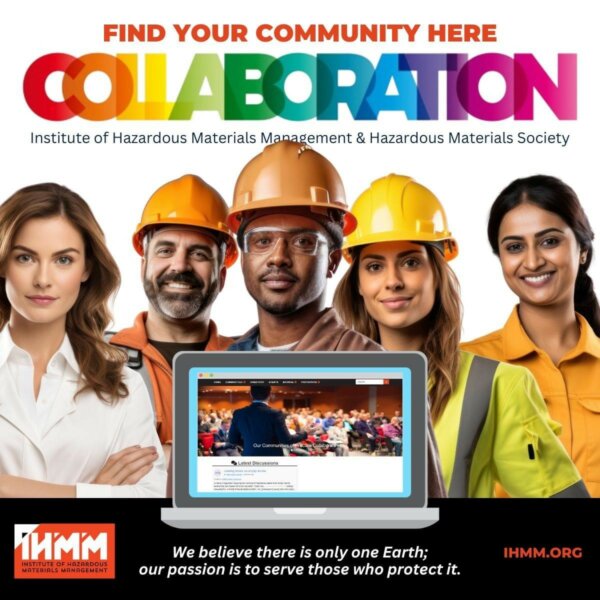
Creating a Collaborative Culture
1,504 different conversations are going on in the IHMM/HMS Collaboration platform this week.
Do you have a problem you need to solve and want the opinions of your colleagues? We created the COLLABORATION platform to enable our certificants to network, learn, and grow from one another.
This is where we collaborate with the best people in their fields, always willing to help one another lessen the stress of our jobs and where we strive as a team to make a difference of which we are proud.
You can collaborate here.
Access to COLLABORATION is through the same username/password you use to access your MYIHMM account. Are you having a problem? Contact Jimmy Nguyen at [email protected]
#1 – Recertification Video
#2 Recertification Video
IHMM Recertification Videos
Congratulations. After hard work and dedication, you earned your professional credential. Now, every 5 years, you will need to recertify your valuable credential. Over 5 years, you need to earn 200 certification maintenance points or CMPs. You receive 100 CMPs for the job you perform, and then need to earn a minimum of another 100 CMPs in a variety of ways, demonstrating your commitment to continuous improvement and remaining current with the demands of your profession and our communities of practice.
Considering everything you did to achieve certification, don’t let it go to waste by failing to recertify.
IHMM Code of Ethics
The IHMM Code of Ethics is essential as it serves as a navigational compass that guides us all in making decisions that align with shared values and ethical principles. It provides a framework for behavior that helps to maintain integrity, trust, and respect in professional and personal interactions. For professional certificants, adhering to the IHMM Code of Ethics is a certification requirement, ensuring that your actions meet industry standards and public expectations. In the business world, a Code of Ethics enhances our reputation, fosters a positive work environment, and promote accountability and continuous improvement in ethical conduct. Moreover, a Code of Ethics helps us navigate morally complex situations, ensuring that our actions are legally and safely grounded in our core values, such as honesty, accountability, and compassion. Ultimately, our Code of Ethics is about committing to a set of principles that not only guide one’s actions but also define one’s character and professional identity.
Everyone sees the IHMM Code of Ethics and signs an adherence statement on making application for one of our credentials. Every existing certificant sees the Code of Ethics again upon recertification and takes a short quiz on the IHMM Code of Ethics.
See the IHMM Code of Ethics video here:
IHMM CONFERENCES For 2024/25
IHMM attended and supported a number of conferences and trade shows throughout 2024. In 2024 IHMM participated in the Bay Area ASSP conference, AIHA Conference & Trade Show, Modern Day Marine Conference, ASSP Annual Conference, AHMP Conference, Environmental Navigator Conference, National Safety Council Conference, and FET.
Are there conferences you believe IHMM should attend that are not named here? If so, let us know by sending an email to [email protected]

IHMM – 33 Mentors Available for You
IHMM Fellows Committee Chair Atanu Das, CHMM, is leading the effort within the IHMM Collaboration networking platform to engage 26 IHMM Fellows as Mentors and anyone seeking assistance as Mentees.
Given Fellows’ extraordinary experience, this is a unique opportunity for IHMM Fellows to help guide more recent certificants in their professional development activities. This article from ASAE magazine outlines how a mentoring program can become more successful – engagement!
IHMM’s Collaboration platform contains a “Mentor Match” module [see below at right] that allows mentors to signup designating the hours, number of mentees, subject areas, and length of time they wish to mentor – as well as enabling mentees signup requesting assistance in specified areas. The mentor match module does the rest by matching mentors and mentees.

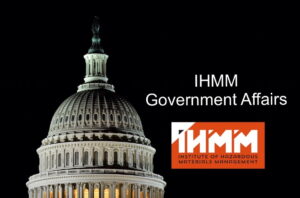
IHMM Organizing Broader Government Affairs Activities – Call for Volunteers
In strategic planning on August 17, 2023 IHMM created a strategic imperative to create a broader government affairs operation on behalf of, and with the assistance of, all of IHMM’s certificants.
- Federal Government – Regulatory
We need a group of people watching Federal regulatory developments to advise when taking action can be helpful and raise our visibility in the agencies. - Federal Government – Congress
We need a group of people watching legislation to advise us when taking action can be helpful and raise our visibility in Congress.
- State Governments – Regulatory
We need a group of people watching state regulatory developments to advise when taking action can be helpful and raise our visibility in the agencies. - State Governments – Legislatures
We need a group of people watching legislation to advise us when taking action can be helpful and raise our visibility in state legislatures.
If you want to make a difference in the recognition of your credentials and build on the successful record we have achieved thus far – we need you to volunteer. Learn more by visiting our Government Affairs Committee page, and get involved with government affairs. You can volunteer for one, two, three or all four of the segments of the committee’s work. That’s up to you!

IHMM Proposes Changes in Government Recognition of Credentials
- IHMM has filed comments on the OMB Inquiry concerning the EPA and DOL proposed regulatory measures concerning Methylene Chloride on December 13, 2024.
- IHMM Sent a letter to the U.S. Department of the Interior, National Park Service, concerning the uses of professionally credentialed persons performing work for the Park Service.
- IHMM Signs Letter Opposing Reductions in OSH Worker’s Pay – The IHMM Government Affairs Committee has agreed to sign a coalition letter opposing reductions in pay for IH and OSH employees. Here is the coalition letter we signed.
4. IHMM submitted comments on OSHA Advisory Committee on Construction Safety and Health (ACCSH): Notice of Meetings concerning OSHA-2024-0002-0007, and highlighted the creation of IHMM’s Certified Pandemic Preparedness Specialist [CPPS] credential.
5. State of Maine Department of Environmental Protection is proposing to update Chapter 851, Standards for Generators of Hazardous Waste. In the current regulation, work is required by a professional engineer. IHMM is proposing to include an environmental professional as defined by 40 CFR §312.10.
All IHMM Government Affairs Projects Are Here
Beltway Buzz – Ogletree Deakins
The Race to Wrap Up the 118th Congress. The U.S. Congress is back in Washington, D.C., this week after legislators spent last week at home on Thanksgiving break. Legislators are scheduled to remain in town until December 20, 2024, but that date can be moved up or pushed back, depending on how quickly they address their outstanding issues. So what is in store for Congress during this three-week sprint? As the Buzz has mentioned over these recent weeks, funding for the federal government expires in fourteen days (on December 20). There is also the national defense authorization bill, the farm bill, and disaster relief. Finally, of particular significance for the Buzz, the U.S. Senate has made it through another week without acting on the nomination of Lauren McFerran to remain on the National Labor Relations Board (NLRB). However, Senator Charles Schumer (D-NY) has stated publicly that confirming McFerran is one of his “highest priorities.”
DOL Appeals Decision Striking OT Regulations. The U.S. Department of Labor (DOL) has appealed the November 2024 decision of the U.S. District Court for the Eastern District of Texas to strike down the April 2024 overtime rule in its entirety. While nothing is guaranteed, many are expecting the incoming administration to drop the appeal. Keith E. Kopplin, Charles E. McDonald, III, and Zachary V. Zagger have the details.
DOL Proposes Eliminating Subminimum Wage for Individuals With Disabilities. On December 4, 2024, the DOL issued a notice of proposed rulemaking entitled, “Employment of Workers With Disabilities Under Section 14(c) of the Fair Labor Standards Act.” The regulation would eliminate “14(c) certificates” that allow employers to pay subminimum wages to workers with disabilities. When Congress enacted the Fair Labor Standards Act in 1938, this provision was included to ensure that individuals with disabilities could secure employment opportunities. Now, through this proposal, DOL maintains that the certificates are no longer necessary because, “Although it is widely acknowledged that individuals with disabilities continue to face challenges in obtaining equal opportunity and treatment, the extent of legal protections opportunities, resources, training, technological advancements, and supports has dramatically expanded since 1989, when the DOL’s regulation was last substantively updated, to assist individuals with disabilities both in obtaining and maintaining employment at or above the full minimum wage.” Comments are due by January 17, 2025, so the fate of the proposal will ultimately be determined by the incoming administration. Charles E. McDonald, III, and Leah J. Shepherd have the details.
More DOL Regulatory Activity. While the DOL’s Wage and Hour Division appeals its overtime regulations and seeks to eliminate 14(c) certificates, other DOL sub-agencies are pulling back on rulemaking efforts. Here is what is happening:
- Employer “Split Income” Reporting. The DOL’s Office of Labor-Management Standards has officially withdrawn its forecasted “split income” employer reporting regulation. The proposal, which was never made public and appeared on the administration’s regulatory agenda for the first time in July 2024, would have required employers to report their “supervisors’ income on a split basis, that is, the pro rata share of the supervisor’s wages that were spent undertaking the reportable activity.”
- DOL Withdraws Apprenticeship Rule. The DOL’s Employment and Training Administration has officially withdrawn its proposed changes to regulations implementing government-registered apprenticeship programs. The proposal, which was introduced in early 2024, was criticized by many in the business community as being overly burdensome and biased in favor of organized labor.
OSHA Extends Deadline to Submit Comments on Heat Proposal. The Occupational Safety and Health Administration (OSHA) has extended the deadline for stakeholders to submit comments to its proposed standard, “Heat Injury and Illness Prevention in Outdoor and Indoor Work Settings.” The comment docket was scheduled to close on December 30, 2024, but will now close on January 14, 2025. While the brief extension likely has some commenters breathing a sigh of relief, the new deadline will ensure that the docket will close prior to the arrival of the new Trump administration. What the new administration will do with the proposal is unclear at this time, but it assuredly will not be finalized as originally proposed.

What to Expect from the New Administration: B&C Offers Webinar
“What to Expect When You Don’t Know What to Expect in Chemicals Policy and Regulation and on Capitol Hill in 2025,” January 14, 2025, 11:00 a.m. – 12:00 p.m. (EST).
REGISTER NOW
Lynn L. Bergeson, James V. Aidala, Mark J. Washko, and Richard E. Engler, Ph.D., will unpack the likely impacts of the new Administration on the regulated community, provide their seasoned outlook on how similar or different the Trump II Administration might be from the first term, and discuss what companies can do to respond to the opportunities and challenges presented.
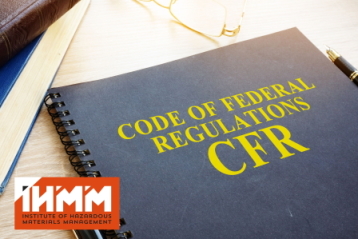
Regulatory Updates
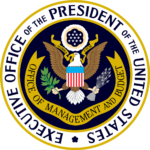
IHMM Filed Comments – Agency Information Collection Activities; Submission for OMB Review; Comment Request; Methylene Chloride Standard
Deadline: December 13, 2024
The agency published an ICR related to its Methylene Chloride standard. This chemical is hazardous but widely used in industry, so OSHA closely monitors safety standards. The regulation of methylene chloride, also known as dichloromethane (DCM), is primarily governed by the U.S. Environmental Protection Agency (EPA) under the Toxic Substances Control Act (TSCA).
- U.S. Environmental Protection Agency (EPA). (2024). A Guide to Complying with the 2024 Methylene Chloride Regulation Under the Toxic Substances Control Act (TSCA).
- U.S. Environmental Protection Agency (EPA). (2024). Risk Management for Methylene Chloride.
- U.S. Environmental Protection Agency (EPA). (2024). Fact Sheet: Regulation of Methylene Chloride under TSCA.
These regulations aim to protect public health and the environment by reducing exposure to this hazardous chemical.
IHMM Comments Filed 12-13-2024
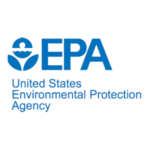
EPA Clarifies E-Manifest Rules
In a new final rule, which we reported on in November, the agency issued a set of technical corrections to portions of its regulations dealing with the relatively new e-manifest program. The corrections mainly affect export programs.
The EPA E-Manifest rule establishes a national electronic manifest system for tracking hazardous waste shipments. The rule aims to improve the tracking and management of hazardous waste through electronic means, enhancing efficiency and accuracy. Key elements include:
- Mandatory Use: Facilities that generate hazardous waste must use the electronic manifest system when shipping waste.
- Data Standardization: The rule includes provisions for data standardization, which helps streamline interstate hazardous waste tracking.
- User Fees: The EPA outlines a fee structure to cover the costs of the e-manifest system, with fees designed to promote compliance and ensure sustainability.
- Security and Privacy: The regulation emphasizes safeguarding sensitive information and maintaining data privacy.
- Flexibility: While the electronic system is mandatory, there are provisions for exceptions or compliance through paper manifests in certain circumstances.
Regulatory adjustments in the EPA’s e-Manifest rules typically aim to address practical issues highlighted by stakeholders such as industry participants, environmental groups, and state agencies. These adjustments often seek to enhance compliance, improve environmental protection, and streamline processes. Here are a few common areas that might be involved:
- Clarification on Reporting Requirements: Adjustments may clarify what information must be included in manifests, ensuring all parties have a consistent understanding of reporting obligations.
- Changes in Scope or Applicability: Updates may redefine which waste types or generators are covered by the e-Manifest system, potentially broadening or narrowing its applicability.
- Alignment with State Regulations: Harmonizing federal requirements with state-level regulations to reduce conflicts and simplify compliance for businesses operating in multiple states.
- Improved Flexibility: Changes that allow for more flexible implementation of manifesting obligations, such as allowing alternative methods for certain conditions or types of waste.
- Environmental Policy Alignment: Modifications to reflect broader environmental goals or commitments, such as increased emphasis on tracking hazardous waste to minimize spills and illegal dumping.
Overall, the E-Manifest rule represents a significant step towards modernizing hazardous waste management and improving environmental protection.
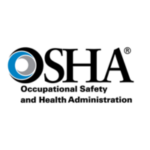
IHMM Drafts Comments – OSHA – Proposed Rule to Protect Indoor and Outdoor Workers from Extreme Heat
Deadline: January 14, 2025
The Occupational Safety and Health Administration (OSHA) has released a proposed rule that would protect approximately 36 million workers in indoor and outdoor work settings from extreme heat. The proposed rule would require employers to develop an injury and illness prevention plan to control heat hazards in workplaces affected by excessive heat. Among other things, the plan would require employers to evaluate heat risks and — when heat increases risks to workers — implement requirements for drinking water, rest breaks and control of indoor heat. It would also require a plan to protect new or returning workers unaccustomed to working in high heat conditions.
IHMM has initiated the process of collecting comments from its Government Affairs Committee concerning this proposed regulation and intends on submitting comments on or before December 13, 2024. Any IHMM certificant who wishes to submit comments to IHMM is encouraged to do so by sending an email to Gene Guilford at [email protected]

TEXAS TCEQ – Determining Which Releases are Subject to TRRP
This document describes a process to help clarify when a release of chemicals of concern (COCs) reported to the TCEQ Remediation Division is subject to the Texas Risk Reduction Program (TRRP) rule [Title 30, Texas Administrative Code (30 TAC), Chapter 350)]. This process applies to releases that occur under the jurisdiction of a TCEQ Remediation Division program. The intention of TRRP is to focus on releases that threaten or affect water resources (groundwater, surface water/sediment) and/or those releases that necessitate a decontamination or control remedy.
This document sets forth the procedure to help persons make this determination. If any other rule, permit, or enforcement order applies and is more stringent, then the requirements of the other rule, permit, or enforcement order must be met. Release determinations do not apply to situations where materials or products are used as intended, such as lawful application of chemical pesticides and agricultural chemicals, paved parking lots or roads, or treated utility poles and railroad ties.
This PDF describes a process for determining if a release of chemicals of concern (COCs) is subject to the Texas Risk Reduction Program (TRRP). The TRRP focuses on releases threatening water resources or requiring decontamination.
Key Aspects:
- Applicability: The process applies to releases under TCEQ Remediation Division jurisdiction, excluding spills handled under 30 TAC Chapter 327 (reported via the Texas Spill Reporting Hotline). More stringent rules supersede this process.
- Assumptions: The process assumes proper notification, identified source areas, proper sample collection and analysis with MQLs below action levels, and sufficient groundwater sampling. If any assumption is invalid, the release is subject to TRRP.
- Definitions: “Release” and “discharge” are defined by statute and rule. Action levels are the lowest applicable Tier 1 residential protective concentration level (PCL) for a given COC, assuming a 0.5-acre source area and Class 1 groundwater.
- Determining Applicability: Three scenarios are outlined based on COC concentrations relative to background levels, MQLs, and PCL-based action levels. These scenarios determine whether or not a release is subject to TRRP, with options for further investigation or remediation.
- Flowchart: A flowchart visually summarizes the decision-making process.
In short: The document provides a step-by-step guide for determining whether a chemical release requires action under the TRRP based on concentration levels compared to background and established thresholds. If there’s uncertainty at any step, the release falls under TRRP.
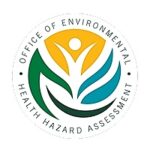
Proposition 65: OEHHA Adopts Changes to “Short-Form” Warning Option
On December 6, 2024, the California Office of Environmental Health Hazard Assessment (OEHHA) issued a notice stating that the Office of Administrative Law (OAL) approved changes to the Proposition 65 (Prop 65) Article 6 “clear and reasonable warnings” regulations for “short-form” warnings (Notice). The changes adopted are to the proposed regulations that OEHHA issued on October 27, 2023. The effective date for the regulations is January 1, 2025, with a three-year implementation period. For more information on the new requirements, please read the full memorandum.
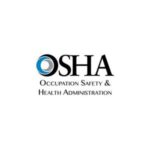
US Department of Labor announces release of detailed 2023 case data on more than 890K injuries, illnesses at over 91K workplaces
The U.S. Department of Labor announced on December 12th the release of comprehensive data collected by its Occupational Safety and Health Administration on more than 890,000 workplace injuries and illnesses at more than 91,000 workplaces in calendar year 2023, including incident level details on the conditions and circumstances of injury and illness events.
Federal electronic recordkeeping and reporting requirements require certain employers to use OSHA’s Injury Tracking Application to submit injury and illnesses reports. The posted data supports OSHA’s continued efforts to carry out the agency’s statutory mission to assure safe and healthful working conditions for working people.
To promote understanding, OSHA has produced a video explaining the workplace injury and illness data collected by the Injury Tracking Application.
Learn more about OSHA’s Injury Tracking Application and OSHA’s recordkeeping and reporting requirements

EPA Risk Assessments Under TSCA
The agency has published three risk assessment notices and IHMM is providing a summary of each here.
This document announces the final supplemental risk evaluation for asbestos under the Toxic Substances Control Act (TSCA). The EPA’s evaluation considered legacy uses and associated disposals of asbestos, including chrysotile asbestos, five additional fiber types, asbestos-containing talc, and Libby asbestos.
Key Findings:
- The EPA determined that asbestos poses an unreasonable risk to human health based on the weight of scientific evidence. This determination supersedes previous findings.
- The risk is attributed to cancer and non-cancer effects in workers, handlers, bystanders, and the general population due to inhalation exposure.
- The EPA will initiate risk management actions to address the unreasonable risk, focusing on conditions of use significantly contributing to the risk. This may include measures related to manufacturing, processing, distribution, commercial use, and disposal.
Next Steps:
- The final supplemental risk evaluation is available online at https://www.regulations.gov, docket ID number EPA-EPA-HQ-OPPT-2021-0254.
- The EPA will propose risk management actions to mitigate the identified risks. There will be opportunities for public comment on any proposed actions.
The document also includes information on contacting the EPA for technical or general information.

New EPA Regulatory Actions
Methane Charges
The Environmental Protection Agency (EPA) is promulgating a regulation to facilitate compliance with the requirements of the Waste Emissions Charge in the Clean Air Act’s (CAA) Methane Emissions Reduction Program (MERP). Enacted as part of the Inflation Reduction Act (IRA), this program requires the EPA to impose and collect an annual charge on methane emissions that exceed waste emissions thresholds specified by Congress.
DATES:
This final rule is effective January 17, 2025.
ADDRESSES:
The EPA has established a docket for this action under Docket ID No. EPA-HQ-OAR-2023-0434. All documents in the docket are listed in the https://www.regulations.gov index.
Toxic Substances Control Act: decaBDE and PIP (3:1) Exposure
The Environmental Protection Agency (EPA or Agency) is finalizing revisions to the regulations for decabromodiphenyl ether (decaBDE) and phenol, isopropylated phosphate (3:1) (PIP (3:1)), two of the five persistent, bioaccumulative, and toxic (PBT) chemicals addressed in final rules issued under the Toxic Substances Control Act (TSCA) in January 2021. After receiving additional comments, the Agency has determined that revisions to the decaBDE and PIP (3:1) regulations are necessary to address implementation issues and to further reduce the potential for exposures to decaBDE and PIP (3:1) for humans and the environment to the extent practicable.
DATES:
This rule is effective on January 21, 2025.
ADDRESSES:
The docket for this action, identified by docket identification (ID) number EPA-HQ-OPPT-2023-0376, is available online at https://www.regulations.gov. Additional instructions on visiting the docket, along with more information about dockets generally, is available at https://www.epa.gov/dockets.
FOR FURTHER INFORMATION CONTACT:
For general information: The TSCA Hotline, ABVI-Goodwill, 422 South Clinton Ave., Rochester, NY 14620; telephone number: (202) 554-1404; email address: [email protected].
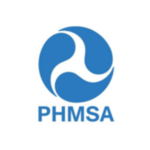
Lithium Battery Guide For Shippers
This compliance resource was prepared to assist a shipper to safely package lithium cells and batteries for transport by all modes of transportation according to the latest regulatory requirements. This guide provides scenario-based situations that outline the applicable requirements that a shipper must follow to ship packages of lithium cells and batteries in various configurations. Each distinct shipping guide in this document refers to the regulatory requirements for a specific lithium cell/battery type, configuration, and size. In this way, a shipper will easily find the applicable provisions that they must follow depending on the scenario they encounter as a shipper.
Please note that these shipping guides are based on the Hazardous Materials Regulations (HMR; 49 CFR Parts 171-180) and can be used as a compliance tool to help outline applicable scenario-based regulatory requirements; this document is not a substitute for the HMR. While every effort has been made to provide a simplified compliance resource consistent with the HMR, if there is any instance in which this document is inconsistent with the HMR, then the HMR requirements supersede this guide. The regulations themselves are the final authority for proper shipping procedures.

Hazardous Materials: Information Collection Activities
Action
Notice and request for comments.
Summary
In accordance with the Paperwork Reduction Act of 1995, PHMSA is publishing a 60-day supplemental notice and providing an additional opportunity for public comment on its development of general investigative questions that may be used by PHMSA’s Office of Hazardous Materials Safety (OHMS) field operations personnel when investigating potential general safety issues. These questions are intended to facilitate fact-gathering efforts during general investigations related to PHMSA’s safety oversight responsibilities. Answering these questions would be voluntary and not impose any new reporting or recordkeeping requirements on regulated entities. Rather, the goal is to develop a pool of questions that can be tailored as appropriate based on the specific circumstances of a general investigation that is not related to the inspection of an individual company or entity for compliance with the hazardous materials regulations.

Reconsideration of the Dust-Lead Hazard Standards and Dust-Lead Post-Abatement Clearance Levels
Deadline: January 13, 2025
As part of EPA’s high-priority efforts to reduce childhood lead exposure, and in accordance with a U.S. Court of Appeals for the Ninth Circuit 2021 opinion, EPA is finalizing its proposal to lower the dust-lead hazard standards to any reportable level as analyzed by a laboratory recognized by EPA’s National Lead Laboratory Accreditation Program (NLLAP). EPA’s lead-based paint (LBP) regulations do not compel property owners or occupants to evaluate their property for LBP hazards or to take control actions, but if a LBP activity such as an abatement is performed, then EPA’s regulations set requirements for doing so. EPA is also finalizing changes to lower the post-abatement dust-lead clearance levels to 5 micrograms per square foot (µg/ft2 ), 40 µg/ft2 , and 100 µg/ft2 for floors, window sills and troughs respectively, the current levels in New York City. Due to feedback from public comments, EPA is also finalizing changes to the nomenclature to adopt the terms dust-lead reportable levels (DLRL) and dust-lead action levels (DLAL). Given the decoupling of the action levels from the reportable levels, EPA is finalizing revisions to the definition of abatement so that the recommendation for action based on dust-lead applies when dust-lead loadings are at or above the action levels, rather than the hazard standards, as has been the case historically. The dust-lead hazard standards will be described as DLRL moving forward ( i.e., after publication of this final rule) and the dust-lead clearance levels will be described as DLAL. Additionally, EPA is finalizing several other amendments, including revising the definition of target housing to conform with the statute.
DATES:
This final rule is effective January 13, 2025. The incorporation by reference of certain material listed in this rule is approved by the Director of the Federal Register as of January 13, 2025.
Federal Register here

PHMSA NPRM on HMR
Deadline: January 27, 2025
The agency published a new proposed rule (NPRM) that if adopted will modify certain provisions of the HMR related particularly to modal-specific requirements. The following are, according to PHMSA, some of the more important topics that feature proposed revisions:
The PHMSA Hazardous Materials Regulations (HMR) rulemaking aims to enhance the safe transportation of hazardous materials by revising modal-specific requirements. Key proposed changes include:
Rail Transportation:
- Adopting amendments from the Railroad Safety Advisory Committee (RSAC) to improve safety and clarity.
- Replacing AAR approval of tank car designs and Quality Assurance Programs (QAPs) with a PHMSA registration program for Design Certifying Engineers (DCEs) and tank car facilities. This aims to increase efficiency and oversight.
- Updating incorporated by reference (IBR) materials, including the AAR Manual of Standards.
- Clarifying and streamlining requirements for tank car unloading, marking, and inspections.
Highway Transportation:
- Implementing improvements based on industry input and safety analysis.
- Clarifying marking requirements for cargo tanks carrying petroleum distillate fuels.
- Updating definitions and clarifying requirements for cargo tank inspections and maintenance.
Vessel Transportation:
- Harmonizing regulations with international standards and making editorial revisions for clarity.
- Improving requirements for stowage, handling, and segregation of hazardous materials.
Multi-modal Changes:
- Clarifying security plan requirements and hazardous materials shipping paper information requirements.
- Updating various definitions and editorial revisions across different transportation modes.
The rulemaking includes regulatory analyses addressing statutory authority, federalism, regulatory flexibility, environmental impacts, and paperwork reduction. PHMSA anticipates the changes will maintain or enhance safety while increasing clarity and reducing compliance burdens. Specific cost savings are estimated at approximately $97.3 million annually.
Comments will be due no later than January 27th, 2025. See the details of this NPRM and find out how to comment here.
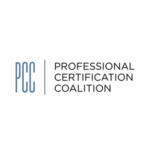
Professional Certification Coalition
While federal legislative action has been nearly non-existent throughout the fall given that Congress has been in recess for the election campaign, planning is well underway for legislative activity in 2025, regardless of which political party controls the lever of power. In particular, congressional Republicans have been hard at work preparing for action on legislation to revise the tax code in 2025, in part due to the expiration of tax cuts implemented in 2017 (former President Trump’s Tax Cuts and Jobs Act). Earlier this month, the PCC – complementing a similar communication from PCC Steering Committee member ASAE – composed and transmitted a letter supporting our Freedom to Invest in Tomorrow’s Workforce Act to the House Ways & Means Committee “Republican Tax Teams” who are taking the lead in determining what legislation will comprise the tax-reform legislation package. Please find this letter attached. To be sure, key Members and staff are already well aware of the PCC’s support for this legislation via our frequent outreach to them, but this puts the PCC officially “on the record” that we are pushing for inclusion of the bill in the tax package for next year. At the same time, we are actively strategizing regarding the best ways to promote our legislation, including determining who could serve as co-leads on a newly introduced version of the bill in 2025, since our lead House Democrat, Rep. Abigail Spanberger (D-VA), and lead Senate Republican, Sen. Mike Braun (R-IN), are both retiring from office at the end of the year to prepare campaigns for governor in their respective states.
IHMM is a member of the PCC. The PCC monitors state and federal legislative and regulatory activity affecting professional certification on an ongoing basis.
Expect new legislation being tracked in 2025 when new Legislatures convene:

Tomorrow’s Workforce Coalition – Senate Action On IHMM-Supported Legislation
The Tomorrow’s Workforce Coalition advocates for beneficial workforce development policy to strengthen the economy now and in the future.
For those of you who were unable to join us for the General Election Recap Webinar that took place on November 13th, please find the webinar recording below to watch at your convenience:
The Coalition supports the bipartisan, bicameral Freedom to Invest in Tomorrow’s Workforce Act (S. 722 / H.R. 1477), which would expand qualified expenses under 529 savings plans to include postsecondary training and credentialing, such as licenses and nongovernmental certifications; it would provide valuable tax-advantaged resources to more workers pursuing career growth, mid-career changes or alternative career pathways.
The Coalition is preparing for the new Congress, which is sworn in on January 3, 2025, and the new President.
S. 722 / H.R. 1477 / Coalition Roster
Important Stories for IHMM Certificants

Merry Christmas – Federal Shutdown Looms December 20th
Congress is facing a key deadline on December 20th to avert a federal government shutdown. Lawmakers are working on a continuing resolution (CR) to extend government funding into early 2025. The CR is necessary because they haven’t reached a final agreement on the fiscal year 2025 spending bill.
In addition to the CR, there’s also a push to pass a disaster recovery package to help communities affected by recent disasters. The situation is quite dynamic, with ongoing negotiations to finalize the details and avoid a shutdown. Congress is likely to pass a stopgap government funding measure before Dec. 20, likely to fund the government until March of next year at its current levels. But considering Johnson’s razor-thin margin and a notable conservative faction of his conference that doesn’t generally support stopgap spending bills, known as continuing resolutions, House Democrats will likely be the ones to get the legislation over the finish line.
Two key pieces of legislation — the Workforce Innovation and Opportunity Act, which funds the bulk of the nation’s work training programs, and the Older Americans Act, which funds a range of services for seniors — could ride on the continuing resolution. Both have sign-offs from the top four committee leaders.
It’s a critical time on Capitol Hill, with a lot at stake for both the government and the public.

Proposed Methods Update Rule 22 Signed by the EPA Administrator
On December 6, 2024, EPA released a proposed rule, Clean Water Act Methods Update Rule 22 for the Analysis of Contaminants in Effluent, which would add or revise analytical methods, or test procedures, for measuring pollutants (also called parameters) in wastewater. Specifically, EPA is proposing to add new agency test methods for per- and polyfluoroalkyl substances (PFAS) and polychlorinated biphenyl (PCB) chemicals and add methods previously published by voluntary consensus standard bodies such as ASTM International, or other vendors. When finalized, industries, states, and municipalities would use these methods for reporting under the EPA’s National Pollutant Discharge Elimination System permit program.
EPA’s proposed rule would also withdraw seven PCB mixtures (Aroclor) parameters. In addition, EPA is proposing to simplify the sampling requirements for two volatile organic compounds and make a series of minor corrections to existing tables of approved methods. This proposed rule does not mandate when a pollutant must be monitored nor whether to establish a discharge limit for a parameter. The agency will accept public comments on the proposed rule for 30 days upon its publication in the Federal Register. For more information on this proposed rule, visit the EPA’s Clean Water Act Methods website.
For any questions related to this announcement, please contact [email protected]
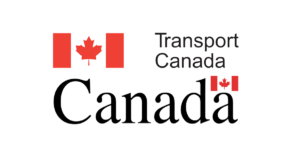
COSTHA, for IHMM and other members, attended the Multi-Association Committee on the Transportation of Dangerous Goods (MACTDG) meeting on November 4, 2024, in preparation for the Transport Canada’s General Policy Advisory Council (GPAC) meetings on November 6, 7 & 20, 2024, which COSTHA also attended.
During the GPAC meeting, Transport Canada (TC) advised that the TDG Directorate was undergoing a reorganization and that resources were sparse. As a result, amendments to the TDG Regulations that stakeholders have been waiting for, such as the Part 12 (Air) & International Harmonization Update (IHU) as well as the Canadian update, are being delayed further. Publication of those 2 amendments in Part II of the Canada Gazette (CG II) is now anticipated for Winter/Spring 2025. Transport Canada also advised that most of the previously proposed changes to Part 2 (Classification) in the IHU will not be part of this amendment (i.e., current Part 2 will remain mostly as is in the TDGR and will not directly reference the UN Model Regulations).
The Canadian Update, originally published in Part I of the Canada Gazette (CG I) in December 2023 is meant to strengthen existing rules, clarify provisions, fix inconsistencies, and introduce new rules in response to concerns raised by stakeholders, inspectors, and local authorities. It includes, but is not limited to, the following:
- Update existing requirements for rail transportation to better align the Canadian buffer car rules with the US;
- Amend the requirements for the transportation of anhydrous ammonia on public roads for agricultural purposes to address ongoing safety concerns; and
- Harmonize the TDGR with the PTNSR, 2015, regarding the transportation of unclassified radioactive waste materials back to the consignors for characterization.
The Part 12 & International Harmonization Update is meant to align the TDGR with the latest editions of the international codes, remove some of the differences between the Canadian and American regulations that create regulatory barriers and impede the seamless transportation of DG across the border. It is also meant to improve clarity of the air transport requirements.
Note that the proposed amendments to Part 6 (Training), which were originally published in Part I of the Canada Gazette in December 2021, will be completely reviewed after comments from stakeholders and a review of the costs associated with its implementation. Transport Canada advised that a “white paper” with is planned to be shared with stakeholders in early 2025. They have also advised that even though safety standard CAN/CGSB-192.3 (Transportation of dangerous goods training, assessment and competency) has been withdrawn, it can still be used as a reference for training purposes.

Per- and Polyfluoroalkyl Substances (PFAS) News and Information
The attorneys, scientists, regulatory specialists, and business consultants of Bergeson & Campbell, P.C. (B&C®) and our consulting affiliate The Acta Group (Acta®) relentlessly participate in and track developments regarding the global regulatory approach to PFAS. We offer this constantly updated library of PFAS resources to help those in the chemical and chemical products industry understand what they need to know and what it means to their business.
EPA and Other Agency PFAS links:
- Recording, transcripts, and slides from EPA webinar “TSCA Section 8(a)(7) Rule: Reporting and Recordkeeping Requirements for PFAS” held January 25, 2024
- EPA PFAS Resource Page
- EPA List of PFAS for TSCA Section 8(a)(7) Rule
- PFAS Strategic Roadmap: EPA’s Commitments to Action 2021-2024
- EPA PFAS Strategic Roadmap: Research Tools and Resources Webinar Archive
- EPA PFAS Resources, Data and Tools
- EPA PFAS Analytic Tools
- EPA Press Releases Related to PFAS
- European Chemicals Agency (ECHA) PFAS Resource Page
- OECD Portal on Per- and Polyfluoroalkyl Substances (PFAS)
- Minnesota Pollution Control Agency PFAS ban

Evidence-Based Guide: Suicide Prevention Strategies for Underserved Youth
SAMHSA’s new Evidence-Based Guide: Suicide Prevention Strategies for Underserved Youth offers tailored strategies to support at-risk groups and prevent youth suicides. This guide addresses barriers to accessing services, provides insights into effective prevention programs, and showcases initiatives making a difference in underserved communities. Designed to help schools, organizations, and communities, it’s a valuable resource for implementing and evaluating impactful suicide prevention strategies.
______
“Emerging Threats in K-12 Schools.”
Thank you for joining our recent webinar, “Emerging Threats in K-12 Schools.” The conversation was rich with insights on the evolving safety challenges schools face, including the impact of social media, staffing shortages, and the importance of trust and collaboration.
If you missed it—or want to revisit key takeaways—the webinar replay is now available.
In the webinar, we covered important topics including:
- Key considerations for crowd management
- The role of technology in improving event safety
- How to build a culture of security in school communities
______
STOP Grantees – Register Now!
STOP Grantees, join us for the STOP TTA Winter Quarterly Meetings, where we will review key trends from our needs assessment, followed by interactive breakout sessions for collaboration with other grantees. You will also get an exclusive preview of the upcoming Community of Practice platform for continued networking and idea-sharing. Don’t miss this opportunity to share your ideas, exchange knowledge, and contribute to the ongoing conversation about school safety!
- East Region: January 7, 2025 from 1:00 – 2:00 PM ET
- Midwest Region: January 8, 2025 from 12:00 – 1:00 PM ET
- West Region: January 13, 2025 from 3:00 – 4:00 PM ET
- South Region: January 14, 2025 from 12:00 – 1:00 PM ET
Register Now
______
School Resource Officer Video Series
School Resource Officers (SROs) play a key role in student safety, serving as advocates, educators, and protectors. This video series provides SROs with practical strategies to connect with students, understand their perspectives, and break down communication barriers to foster a positive presence in schools. Produced in partnership with Katherine Schweit, JD, at Schweit Consulting and Rocket Media Group, the series includes six short videos, each accompanied by an informational poster to reinforce key takeaways. Explore the videos and posters to strengthen your approach to building trust and ensuring a safe, supportive school environment.
Watch Now
_______
Empowering Education Leaders: A Toolkit for Safe, Ethical, and Equitable AI Integration
The U.S. Department of Education, Office of Educational Technology’s new Empowering Education Leaders Toolkit helps school leaders safely and equitably integrate AI into education. It provides steps for addressing issues like deepfakes, AI-generated school threats, and cyberbullying. The toolkit also offers guidance on protecting student privacy and data, ethical AI use, and presents an overview of federal laws and considerations. These are essential to anchoring and ensuring the use of AI in a safe, secure, and non-discriminatory manner. Explore the toolkit to learn about key considerations for AI in schools.
Learn More Here
______
Creating a Culture of Support: Enhancing Staff Resilience in Emergency Situations
Available Now as an On-Demand Webinar
Emergency drills can be stressful for school staff, but integrating mental health support and breaking down safety silos can enhance resilience.
In this on-demand webinar, presenters from the Colorado School of Public Health share strategies for improving emergency drill systems through tailored training, staff feedback, and local resource identification. Participants will learn to customize training for their districts, facilitate effective feedback sessions, and implement changes based on staff input.
Watch Now Here
________
OJJDP Launches New Curriculum
The Office of Juvenile Justice and Delinquency Prevention (OJJDP) recently launched the Youth Hate Crimes and Identity-Based Bullying Prevention Curriculum, a key part of its initiative to address hate crimes and bullying. This 10-unit resource helps build protective factors in youth, change harmful behaviors, and educate professionals on using technology to reduce bias. It’s designed for youth-serving organizations, schools, and community groups to raise awareness and prevent identity-based bullying. Explore it today!
Learn More Here
_______
- Apply Now – U.S. Department of Homeland Security’s National Threat Evaluation and Reporting (NTER) Master Trainer Program (MTP)
- 1/8/25 – Supporting Children of Incarcerated Parents: Addressing School-Based Bias and Stigma
Hosted by The Council of State Governments (CSG) Justice Center - 1/15/25 – Enhancing School Safety Using Behavioral Threat Assessment
Hosted by the Department of Homeland Security
______
CISA Launches New Resource
Anonymous threats of violence, especially on social media, are common in K-12 schools. According to the FBI, schools faced over 6,000 such threats in 2022, causing fear, disrupting learning, and straining resources. To address this, CISA has released the Anonymized Threat Response Guidance: A Toolkit for K-12 Schools, which helps schools, law enforcement, and communities respond to and prevent anonymous threats. Explore the toolkit to learn actionable steps for improving school safety. Learn more here.
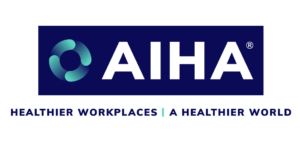
Controlling Plant and Animal Hazards
Michael Goldman, CIH, CHMM, CSP, CPEA, QEP, didn’t follow the traditional pathway into occupational and environmental health and safety. Now, as a senior safety consultant for Environmental Resources Management and environmental safety and health director with Puldy Resiliency Partners, they still often deal with nontraditional hazards: specifically, dangerous plants and animals.
Goldman grew up in northern Florida, which they described as “a wonderland for anybody who’s interested in insects and reptiles and hazardous plants.” As a child, they collected insects and encountered bark scorpions and luna moths. They graduated from Florida State University with a bachelor’s degree in biology and emphasis on entomology and herpetology and worked briefly at the Smithsonian’s O. Orkin Insect Zoo before moving into industrial hygiene. They’ve remained in the field for the past 35 years.
Read more here.

- Revised rules for classification, labelling and packaging enter into force
- Highlights from November RAC and SEAC meetings
- CLP revision defines new role for distributors in poison centre notifications
- Consultation on harmonised classification and labelling
- New intentions and proposals to harmonise classification and labelling
- Consultations
- New report evaluates performance of EUON
- Protecting workers from carcinogens
IHMM Credential Recognition
The highest priority of IHMM’s Government Affairs Committee is the recognition of IHMM’s credentials by government. We have made substantial progress in the two years we have undertaken this endeavor, as outlined in detail here > https://ihmm.org/credential-recognition/
In this project we have 45-in-5, increasing the number of states that recognize IHMM credentials.
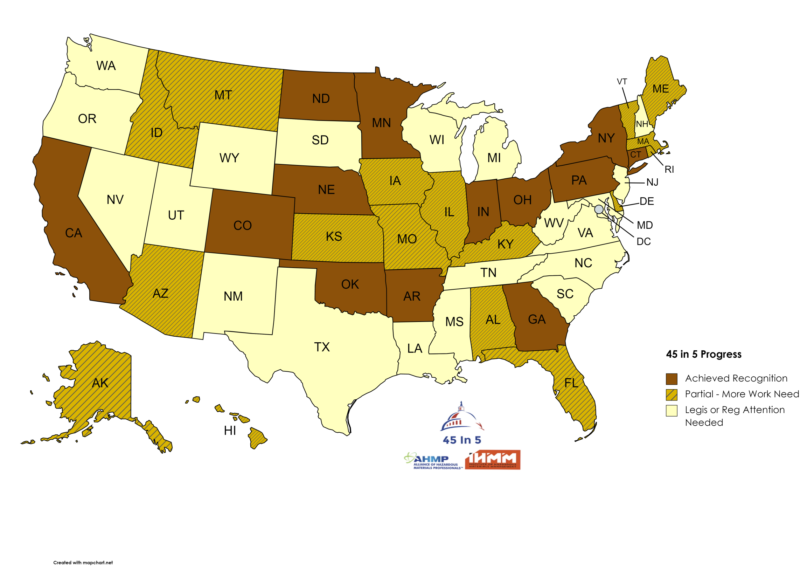
- We have already succeeded in 13 states – New York, Connecticut, Pennsylvania, Indiana, California, Colorado, Nebraska, Minnesota, Arkansas, Oklahoma. Ohio, North Dakota, and Georgia. [Red states in the map above]. These are states where IHMM credentials are cited or 40 CFR 312.10 is cited by reference.
- We have partially succeeded in another 16 states – Alaska, Hawaii, Idaho, Montana, Arizona, Kansas, Iowa, Missouri, Illinois, Kentucky, Florida, Delaware, Rhode Island, Massachusetts, Vermont, and Maine. [Orange/Black Stripe states in the map above] These are states where the requirements of an “environmental professional” or QEP are cited that coincide with an IHMM credential so that relatively little work would need to be done to clarify the desired outcome.
- We have 21 states where no reference to an IHMM credential is made in either statute or regulation, nor is there anything defined in the area of an environmental professional. These states will require legislation or regulatory work. [Yellow states in the map above].
in January 2022 Gene Guilford released the 40 CFR § 312.10 EPA regulation that states a private certification that meets or exceeds the requirements of the regulation is an Environmental Professional under the regulation. Here is the crosswalk between the 40 CFR § 312.10 EPA regulation and the Certified Hazardous Materials Manager [CHMM] blueprint. The CHMM meets or exceeds the requirements of an Environmental Professional.
Here’s what we ask each volunteer to do:
- Watch legislative and regulatory developments in your state that provide an opportunity for us to create amendments or other interventions
- Be willing to speak with regulators and legislators in your area about the recognition efforts we craft together
Retiring? IHMM Invites You to Become an Emeritus
You may have decided, after a long and successful career, to retire from active daily duty. Congratulations. That doesn’t mean you have to completely disengage from your profession. IHMM is pleased to offer Emeritus status to all certificants who will no longer be actively engaged in their communities of practice but who still want to stay in touch. Please let us know when you’re approaching that decision and we will assist you in the credential transition.
Please contact Jimmy Nguyen at [email protected] and he’ll be happy to help you.
News from IHMM Affiliates
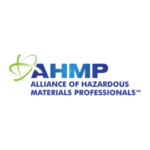
Alliance of Hazardous Materials Professionals
IHMM is affiliated with AHMP and is pleased to bring this important information to all of our certificants.
AHMP News
- Save the date for the 2025 EHS HazMat Summit which will be held in Louisville, KY, on September 8-11, 2025
AHMP Webinars

National Safety Council
IHMM is a member of the National Safety Council and is pleased to bring this important information to all of our certificants.
NSC News
- Arkansas advocacy group suggests policies to curb child labor violations
- DOT floats temporary change to drug testing procedures
- Work stress may affect heart health later in life
- Maine adopts final rule on paid family and medical leave
- OSHA releases detailed data on 2023 injuries and illnesses
- CVSA inspection blitz sidelines trucks and buses for hazmat violations
NSC Webinars

American Society of Safety Professionals
IHMM is a member of the American Society of Safety Professionals and is pleased to bring this important information to all of our certificants.
ASSP News
- Feb 13-Mar 13 – Advanced Safety Management Methods
- Feb 13 – Mar 13 – Influential Leadership Skills
- Feb 27 – Mar 27 – Risk Assessment and Management for Safety Professionals
- Feb 27 – Mar 27 – Corporate Safety Management(25FEB27)
- Feb 27 – Mar 27 – Prevention through Design
- Feb 27 – Mar 27 – Safety Management I
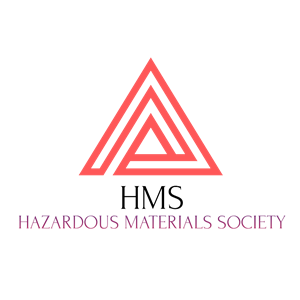
HAZARDOUS MATERIALS SOCIETY
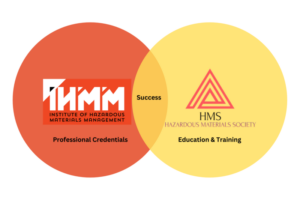
IHMM and HMS
The graphic to the left illustrates the relationship between IHMM and HMS. IHMM formed HMS to serve IHMM’s certificants. IHMM offers a variety of professional credentials and HMS creates education and training programs to serve the applicants and certificants of those credentials.

NPETE HazMat Training Courses for 2025
Some of these courses are 24 hours long and approved for 24 IHMM CMPs; some are 8 hours long and approved for 8 IHMM CMPs and are FREE to attend. They are available only as in-person training.
The May 20-22, 2025 programs with IHMM you may register directly with IHMM. For other venues, registrations contact Mr. Raymond Davis, CHMM, IHMM Fellow, NPETE US DOT PHMSA HMIT Grant Project Coordinator/Instructor at [email protected]
| May 20, 2025 | Rockville, MD In Person | ||
| May 21, 2025 | Rockville, MD In Person | ||
| May 22, 2025 | Rockville, MD In Person |
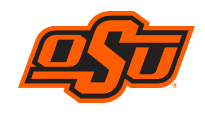
Oklahoma State University Becomes an HMS Training Partner
IHMM is pleased to announce that Oklahoma State University’s College of Engineering, Architecture, and Technology [CEAT], has become an HMS Training Partner. OSU brings its Environmental Management Certificate Program to us, which runs April 7-11, 2025.
| April 7-11, 2025 | OSU-Tulsa, OK |

University of Cincinnati, OSHA Training Institute, IHMM, and HMS’ New Training Partner Offers Courses for 2024
| Daily | Online |
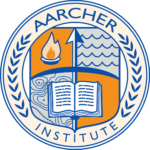
Aarcher Institute, IHMM, and HMS’ New Training Partner Offers Courses for 2024
| Dec 10-12, 2024 | Online |
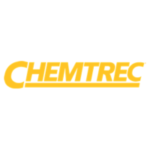
CHEMTREC, HMS Training Partner, Adds Courses for IHMM Certificants
This week CHEMTREC has added its HAZWOPER 8-hour Refresher Training to the HMS Daily Training schedule. This HAZWOPER 8-hour Refresher Training is designed for individuals who need to refresh their existing 24-hour or 40-hour HAZWOPER certification. This course meets the requirements outlined in OSHA 29 CFR 1910.120 for 8 (eight) hours of annual refresher training for workers involved in the transport, storage, or handling of hazardous materials or hazardous waste.
See the CHEMTREC HAZWOPER 8-hour Refresher Training here!
CHEMTREC, an HMS training partner, has had 7 courses approved in advance for earning IHMM recertification certification maintenance points. We are pleased to promote these programs as reviewed and approved by the HMS Education and Training Committee. Thank you CHEMTREC, and thank to HMS’ Education and Training Committee.
| Daily | Ground Transportation for Carriers | Online |
| Daily | OSHA Hazard Communications Standard | Online |
| Daily | Shipping Lithium Batteries and Cells Training | Online |
| Daily | Hazmat General, Safety and Security Awareness Online Training Course | Online |
| Daily | IATA Dangerous Goods Online Training for Operations | Online |
| Daily | 49 CFR Training | Online |
| Daily | IATA Dangerous Goods Online Training for Operations Personnel | Online |
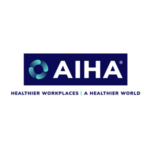
AIHA, HMS Training Partner, Adds Courses for IHMM Certificants
American Industrial Hygiene Association [AIHA] an HMS training partner, has added its first of many courses approved in advance for earning IHMM recertification certification maintenance points. We are pleased to promote these programs in support of IHMM certificants holding the CHMM, CHMP, CSHM, and CSMP credentials. Thank you, AIHA.
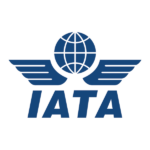
IATA, HMS Training Partner, Adds Courses for IHMM Certificants
IATA, an HMS training partner, has had 3 more courses approved in advance for earning IHMM recertification certification maintenance points. We are pleased to promote these programs as reviewed and approved by the HMS Education and Training Committee. Thank you IATA and thank to HMS’ Education and Training Committee.
Thank you, IATA for contributing programs enabling IHMM certificants to engage in professional development and earn important CMPs!

Bowen EHS, HMS Training Partner, Adds Courses for IHMM Certificants
Bowen EHS, an HMS training partner, has had 4 courses approved in advance for earning IHMM recertification certification maintenance points. We are pleased to promote these programs as reviewed and approved by the HMS Education and Training Committee, chaired by Diana Lundelius. Thank you Bowen EHS and thank to HMS’ Education and Training Committee.
Thank you Bowen EHS for contributing programs enabling IHMM certificants to engage in professional development and earn important CMPs! All three of the new Bowen EHS programs are available online and on demand.
| Daily | Online | |
| Daily | Online | |
| Daily | Online | |
| Daily | Online |
.
Thank you Bowen EHS for contributing programs enabling IHMM certificants to engage in professional development and earn important CMPs! All three of the new Bowen EHS programs are available online and on demand.

Easily Find Courses to Help You Pass IHMM Credential Exams
A core mission of HMS is education and training. Part of that mission includes assembling the best and most effective courses to assist IHMM applicants in passing their IHMM credential exams.
CDGP® Prep Course
CE-1112: CDGP® Exam Prep – Columbia Southern University – Available On Demand
CHMM® Prep Courses
- AHMP EHMM Course Dec 10-12, 2024
- Daily – CHMM® Online Review – Bowen
- Daily – CHMM® Prep Course – Institute of Safety & Systems Management
- Daily –Certified Hazardous Materials Managers (CHMM®) Exam Prep – SPAN Exam Prep, Division of ClickSafety
CSHM™ Prep Courses
CSMP™ Prep Courses
IHMM and HMS Tie Exam Preparation Together for Applicants
Every IHMM certification that requires an examination has a section of its website entitled Examination Preparation.
Connected to the Examination Preparation panel is a companion panel that is Find a Course to Prepare for the Exam.
You see the Find a Course to Prepare for the Exam panel from the CHMM site at left.
When you click on the Find a Course to Prepare for the Exam panel it takes the applicant directly to the HMS site where all CHMM prep courses may be found and chosen.
For the 462 CHMM applicants IHMM had on November 13, 2024, all 462 applicants looking for CHMM prep courses could see and choose their favored CHMM exam prep course. If your course is not on the HMS platform, none of the 462 CHMM applicants could find you.
If you want your CHMM prep course on the HMS platform so it can be found by IHMM CHMM applicants, contact Gene Guilford at [email protected]
HMS Makes Finding Courses to Earn CMPs Easy
Every year more than 1,600 IHMM certificants have to recertify their credentials, evidenced their continuing commitment to improvement and learning to elevate their professional credential.
Earning Certification Maintenance Points [CMPs] is illustrated under Recertification of Your Credential, that includes the Recertification Claims Manual – Appendix A, that details all of the ways a certificant may earn CMPs > https://ihmm.org/recertification-claims/
Having mastered that manual, how does an IHMM certificant find courses to earn CMPs?
HMS has made that simple and easy.
- Go to https://hazmatsociety.org/education-training/
- Scroll down until you see a row of buttons…click on the CMPs button

The system will then generate all of the courses on the HMS E&T platform with IHMM CMPs already attached.
The next developments by the HMS E&T committee will refine available courses’ CMPs by individual credential!
HMS Certified Dangerous Goods Professional [CDGP] Exam Prep
The Columbia Southern University/HMS CDGP prep course is found here on the Hazardous Materials Society [HMS] education and training website > https://hazmatsociety.org/training/ce-1112-cdgp-exam-prep/2022-02-02/
The CSU CDGP exam prep course is delivered entirely online and may be initiated by any CDGP applicant at any time. The CDGP applicant has up to 10 weeks to complete the prep course, though an extension of the 10 weeks may be requested from CSU directly. The CSU CDGP exam prep course contains 8 modules covering the 4 principle texts involved in the CDGP exam, as follows:
- UN Recommendations on the Transport of Dangerous Goods, and
- International Civil Aviation Organization’s Technical Instructions (ICAO TI), and
- International Air Transport Association’s Dangerous Goods Regulations (IATA DGR), and the
- International Maritime Organization’s Dangerous Goods Code (IMDG Code).
More information on the IHMM Certified Dangerous Goods Professional [CDGP] credential may be found here > https://ihmm.org/cdgp/
Donate to HMS
One of the most important projects of the Hazardous Materials Society is our Scholarship Program.
HMS wants to make it as easy as possible for those who cannot always afford to participate in pursuing certification, or keeping up with professional development, or attending great conferences and receiving outstanding training. HMS does not solicit contributions from the general public. HMS does ask IHMM’s certificants and their companies and our education and training vendors to consider a contribution.
Here, through your generosity, you can make a difference in promoting the ability of those who can afford it least to become participants in our communities of practice.
It’s never too late to make a difference, so don’t let this opportunity to make a difference pass you by. Please consider a tax-deductible donation of $250, $500 or what you can to help build HMS’s effort to help others in our communities of practice.
Member Benefits of Hazardous Materials Society
99% of IHMM certificants are aware of the Hazardous Materials Society, which we appreciate. IHMM established the Hazardous Materials Society in order to support and provide services to IHMM certificants.
Did You Know?
Your company’s membership dues for Associate Membership in the Hazardous Materials Society (HMS) are 100% tax-deductible and your participation directly supports scholarship and education/training opportunities for professionals working in hazmat and EHS. Joining as an Associate Member expresses your commitment and your company’s leadership in giving back to our professional community. Join today to claim your tax deduction for the 2020 tax year while expressing your company’s professional affiliation and accessing tools for your marketing and business development plans.
As an IHMM certificant, you pay no dues to take advantage of IHMM’s Foundation at HMS. We do appreciate IHMM’s certificants encouraging their companies to contribute.
To learn more about what HMS is doing now and what they are planning for the future, please see the new Member Benefits page here.

The Hazardous Materials Society [HMS] is a partner of Columbia Southern University.
Columbia Southern University is an online university based in Orange Beach, Alabama, that strives to change and improve lives through higher education by enabling students to maximize their professional and personal potential.
A subsidiary of Columbia Southern Education Group, CSU offers online degree programs at the associate, bachelor, master, doctorate or certificate levels in a multitude of areas such as occupational safety and health, fire administration, criminal justice, business administration, human resource management, health care administration and more. CSU also features undergraduate and graduate certificate programs to provide focused training in specialized areas for adult learners.
Benefits of a CSU Learning Partnership:
- 10% Tuition Discount
- Exclusive Scholarships
- Waived Application and Evaluation Fees
- Access the Career Services Department
For further assistance or additional information, contact Ernie Smith, [email protected]u, or call 251-923-4055
IHMM has a companion organization for which education and training programs are presented and delivered. The Hazardous Materials Society is IHMM’s Professional Association and HMS’ education and training website can be found here. These events are produced independently of IHMM, and their providers have no access to IHMM certification examinations or program information other than that which is publicly available.
IHMM AFFILIATIONS
9210 Corporate Boulevard, Suite 470
Rockville, Maryland, 20850
www.ihmm.org | [email protected]
Phone: 301-984-8969 | Fax: 301-984-1516






